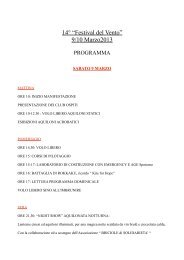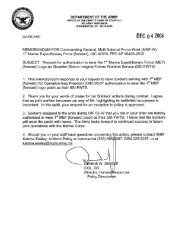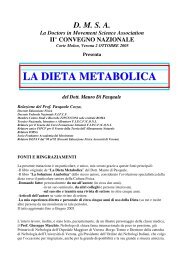Science vs. religion : what scientists really think - File PDF
Science vs. religion : what scientists really think - File PDF
Science vs. religion : what scientists really think - File PDF
Create successful ePaper yourself
Turn your PDF publications into a flip-book with our unique Google optimized e-Paper software.
114Society and Broader PublicsEthan <strong>think</strong>s that <strong>religion</strong> can help <strong>scientists</strong> deal with controversial issues.In his role as a professor, he is interested in teaching graduate students “how to<strong>think</strong> about <strong>what</strong> science is and how to do science.” He compared his approachto science education at his university with that of some of his colleagues, indicatingthat his approach is different from just “distributing facts to [students],”which his colleagues seem to focus on. He went on: “Because it’s not <strong>really</strong> thatdifficult to find any sort of fact you want nowadays. Anybody can go learnabout a topic pretty quickly on their own, but actually <strong>think</strong>ing about the disciplineand <strong>what</strong> you’re supposed to be doing in science is a very difficult problem.”Ethan gave the analogy of an engineer who wants to build a bridge. Theengineer, if he has the plans, the materials, and the people to help him, knowswhen he is finished. But the work of a research scientist is different; it’s extremelyopen-ended. There are no clear-cut blueprints for building a bridge. There arenot even exact bridges in need of building. Instead, science at a universityinvolves teaching students to <strong>think</strong> beyond their own research. For Ethan, thisincludes teaching them how to apply science, how to communicate it to abroader audience, how to <strong>think</strong> about science from “some sort of moral andethical standpoint.”But the biology department where Ethan works does not seem so interestedin these broader issues of public science. He <strong>think</strong>s his department ought tochange and make faculty take more responsibility for teaching students aboutcommunicating science to the public. But because he is only an assistant professor,he feels particularly constrained, unable to give his true opinions. Hetries instead to effect change in more subtle ways. For example, he will notdirectly give students or colleagues his opinions on embryonic stem cellresearch. But he might direct them to a lecture on campus, perhaps by a lawprofessor who deals frankly with the issue. When I asked Ethan why he feels soconstrained, he said that it’s because his campus is an “amazingly homogeneousenvironment.” When I asked Ethan <strong>what</strong> he meant, he responded ratheremphatically: “Everything. Politically. Religiously. Everything. It’s amazing. It<strong>really</strong> is. I never would have believed it, but it <strong>really</strong> is. You certainly have pocketsof people [who are different] on any big campus, but overall, particularly atthe faculty level, the homogeneity is just amazing.” Ethan talked about being ina faculty meeting and other faculty making comments about politics or <strong>religion</strong>with “just the assumption that everybody there absolutely agrees with them,and they <strong>really</strong> have no idea.”So instead of rocking the boat, Ethan simply invites his colleagues andstudents to attend lectures about public science with him: “It gives the studentsa chance to see how some of the real basic research has very big policy implications.”Ethan cares a lot about helping students understand the different
















